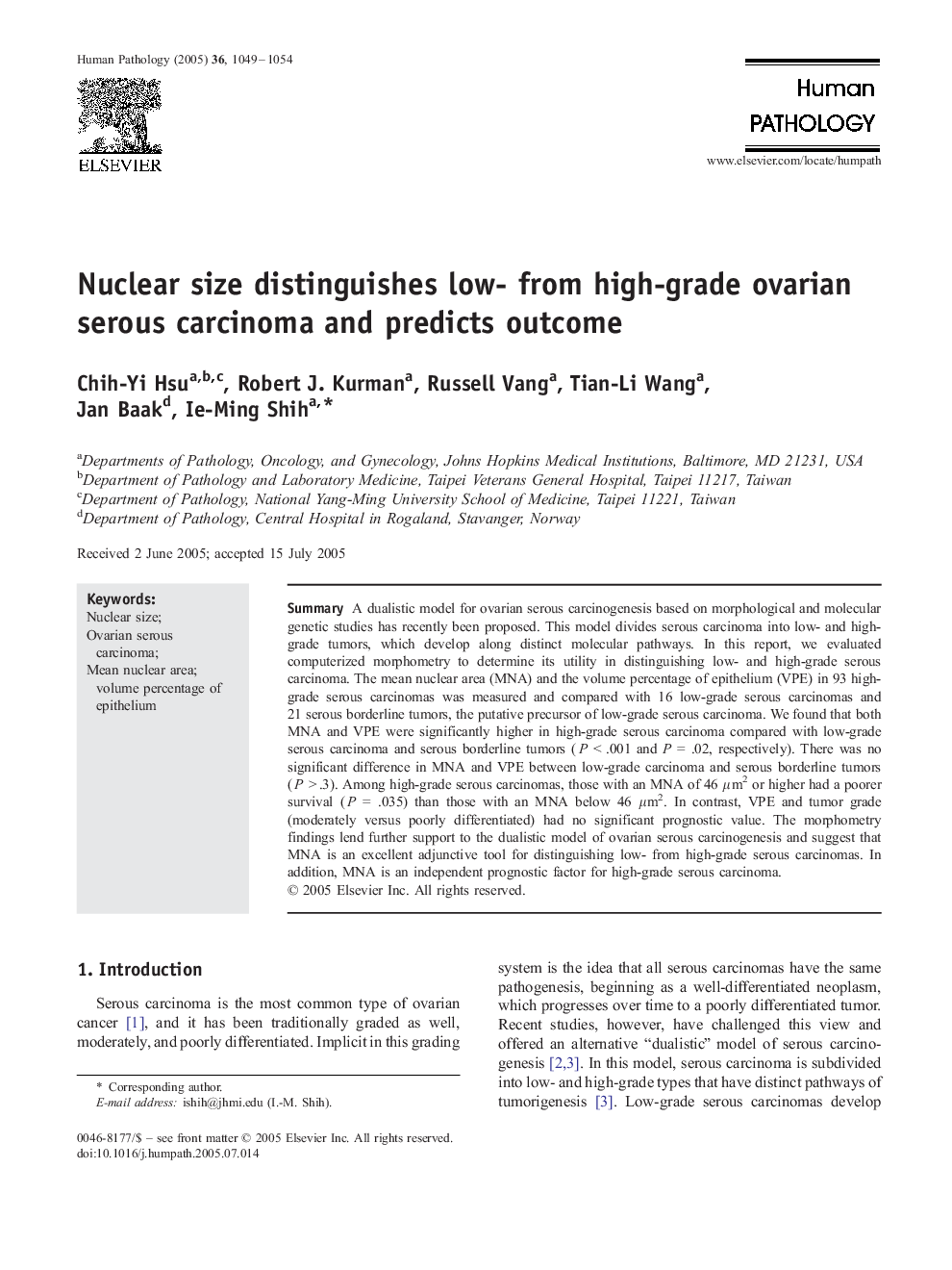| Article ID | Journal | Published Year | Pages | File Type |
|---|---|---|---|---|
| 9365352 | Human Pathology | 2005 | 6 Pages |
Abstract
A dualistic model for ovarian serous carcinogenesis based on morphological and molecular genetic studies has recently been proposed. This model divides serous carcinoma into low- and high-grade tumors, which develop along distinct molecular pathways. In this report, we evaluated computerized morphometry to determine its utility in distinguishing low- and high-grade serous carcinoma. The mean nuclear area (MNA) and the volume percentage of epithelium (VPE) in 93 high-grade serous carcinomas was measured and compared with 16 low-grade serous carcinomas and 21 serous borderline tumors, the putative precursor of low-grade serous carcinoma. We found that both MNA and VPE were significantly higher in high-grade serous carcinoma compared with low-grade serous carcinoma and serous borderline tumors (P < .001 and P = .02, respectively). There was no significant difference in MNA and VPE between low-grade carcinoma and serous borderline tumors (P > .3). Among high-grade serous carcinomas, those with an MNA of 46 μm2 or higher had a poorer survival (P = .035) than those with an MNA below 46 μm2. In contrast, VPE and tumor grade (moderately versus poorly differentiated) had no significant prognostic value. The morphometry findings lend further support to the dualistic model of ovarian serous carcinogenesis and suggest that MNA is an excellent adjunctive tool for distinguishing low- from high-grade serous carcinomas. In addition, MNA is an independent prognostic factor for high-grade serous carcinoma.
Keywords
Related Topics
Health Sciences
Medicine and Dentistry
Pathology and Medical Technology
Authors
Chih-Yi Hsu, Robert J. Kurman, Russell Vang, Tian-Li Wang, Jan Baak, Ie-Ming Shih,
